As Trump takes aim at the Smithsonian, meet the woman racing to visit every exhibit
Earlier this year, TikToker Kathryn Jones began a quest to visit every exhibit at the Smithsonian museums and read every plaque.Justine Goode / NBC News; Getty Images
Pausing next to a hulking steam locomotive at the Smithsonian’s National Museum of American History on Friday, Kathryn Jones bent down to look at a tiny silk slipper.
“I’ve never seen one in person. It’s so small,” she said, pointing at the shoe once worn by a Chinese immigrant with bound feet. “That’s why I love museums. It takes those facts and solidifies it.”
The recording of a trail whistle hooted in the background, bringing to life the 1887 Jupiter steam engine that hauled fruit picked by immigrants in Watsonville, California.
“The immersion, the sounds, the small little touches that suck you in. I’m a sucker for small objects,” she said as she walked through “America on the Move,” her 100th Smithsonian exhibit this year.
In January, Jones began a quest to visit every exhibit at the Smithsonian Institution museums in Washington, D.C., and read every plaque. During the past eight months, she has visited 100 exhibits at 13 museums, meticulously logging her time on detailed spreadsheets. According to her records, that’s 73 hours inside the museums and almost 51 total hours reading signs.
She traverses each exhibit twice, first reading every description and watching every video, then looking at the exhibit again and filming video for her TikTok account.
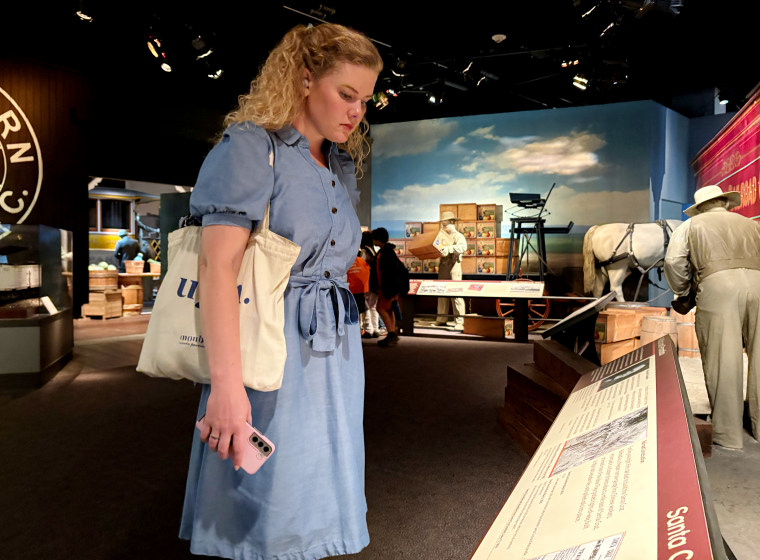
“My goal for that is almost to kind of provide a marketing sizzle reel for the exhibit,” she said. “A priority of mine is getting people in museums, getting people curious, reminding people that learning is fun as well as hopefully right, breaking down the stigma that museums and galleries are stuffy and exclusive and people can’t come.”
Jones paused to take in historic footage of a streetcar passing the White House. “This is what I love to see, D.C. streets which I recognize,” she said. “Look how close to the White House they are with a streetcar.”
She added, “People on roller skates! I did not expect that. A tour! This is so cool.”
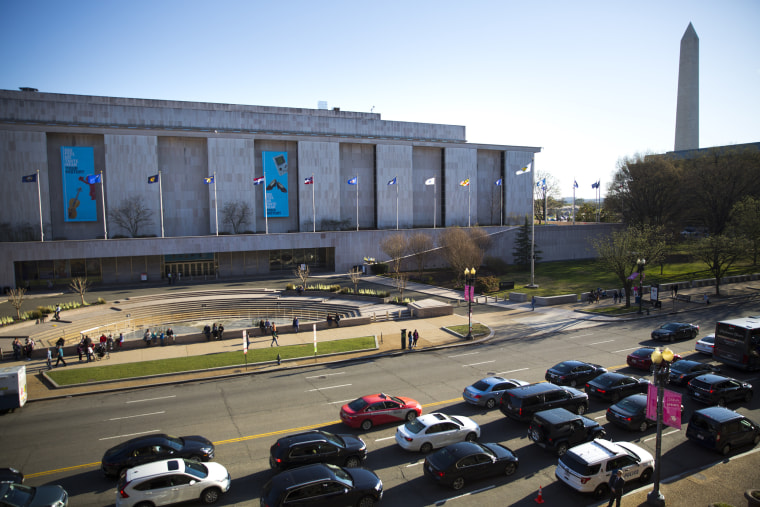
This year, Jones found herself at a professional crossroads after leaving her job as a vice president of marketing.
“I called it my grown-up gap year,” she said. “There were so many aspects of what I was doing that I loved, but I was just kind of burnt out and felt adrift. So, I took the year off with the intention to figure out what brought me joy in life, what I wanted to do.”
Making videos about the Smithsonian, she discovered a passion for content creation, which she intends to continue after filming her last Smithsonian exhibition.
“I tried, I think, three times and failed before I did my first exhibit. I went to a museum with the intention to read everything, and was either too anxious to do it, embarrassed to be filming in public,” she said. “I’m really proud of myself for the strides that I’ve made in my ability to focus, my confidence in myself.”
As Jones has built her channel, the Smithsonian has found itself under increased scrutiny. Last month, the Trump administration informed Smithsonian Secretary Lonnie G. Bunch that it would begin a systematic review to “remove divisive or partisan narratives” in advance of the nation’s 250th anniversary.
A week later, President Donald Trump took aim at the Smithsonian on Truth Social.
“The Smithsonian is OUT OF CONTROL, where everything discussed is how horrible our Country is, how bad Slavery was, and how unaccomplished the downtrodden have been — Nothing about Success, nothing about Brightness, nothing about the Future,” he wrote. “We are not going to allow this to happen.”
The first phase of the review will focus on eight Smithsonian museums, including the National Museum of American History, the National Museum of African American History and Culture and the National Portrait Gallery.
In an interview with Fox News, Lindsey Halligan, one of the White House officials who signed the administration’s Aug. 12 letter to the Smithsonian, addressed the review.
“The fact that … our country was involved in slavery is awful — no one thinks otherwise,” she said. “But what I saw when I was going through the museums, personally, was an overemphasis on slavery, and I think there should be more of an overemphasis on how far we’ve come since slavery.”
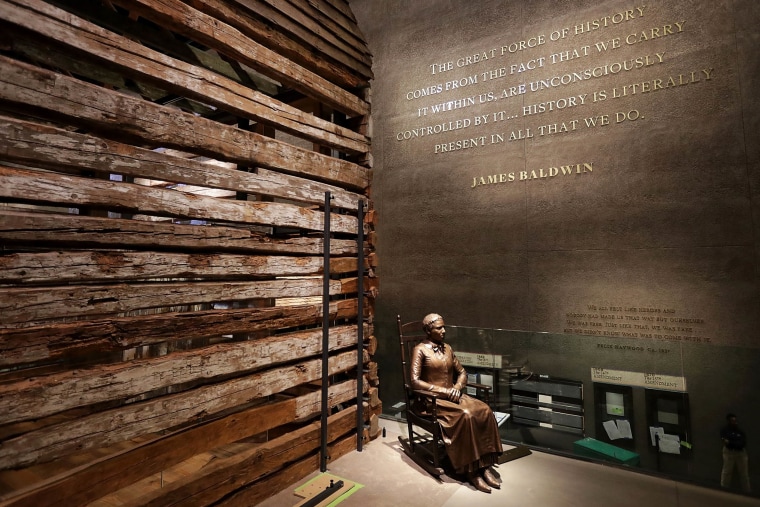
The Smithsonian Institution was in the administration’s crosshairs prior to last month’s review announcement. In March, Trump signed an executive order titled “Restoring Truth and Sanity to American History,” which directed the institution to “prohibit expenditure on exhibits or programs that degrade shared American values, divide Americans based on race, or promote programs or ideologies inconsistent with Federal law and policy.”
In April, an exhibit by African LGBTQ artists was abruptly postponed by the Smithsonian’s National Museum of African Art. The following month, NBC News documented more than 30 artifacts that were removed from the National Museum of African American History and Culture. And in July, artist Amy Sherald canceled an upcoming show at the National Portrait Gallery after she said curators expressed concerns about a painting of a transgender Statue of Liberty.
“It became clear during my exchanges with the gallery how quickly curatorial independence collapses when politics enters the room,” she wrote on MSNBC.com. “Museums are not stages for loyalty. They are civic laboratories. They are places where we wrestle with contradictions, encounter the unfamiliar and widen our circle of empathy. But only if they remain free.”
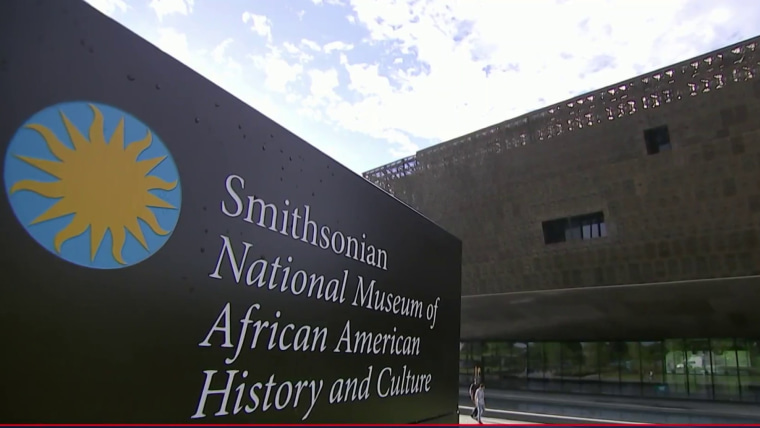
This is not the first time that the Smithsonian has found itself in the crossfire of a culture war. In 2010, the institution withdrew part of an exhibition called Hide/Seek featuring works by LGBTQ artists after sustained outcry by then-House Speaker John Boehner and Catholic organizations.
The institution was also roiled by a debate over a National Air and Space Museum exhibit of the Enola Gay aircraft, which dropped an atomic bomb on Hiroshima, Japan, during World War II. Critics derided plans to include Japanese perspectives and information about the effects of nuclear warfare as an example of “politically correct curating.”
“The Smithsonian has faced crisis moments in the past … but the crisis moments have never come from a direct political assault, certainly not at the hands of the executive,” said Dr. Sam Redman, director of the public history program at the University of Massachusetts, Amherst. “I know we use the word unprecedented a lot in this era, but this is truly unprecedented in terms of thinking about the Smithsonian.”
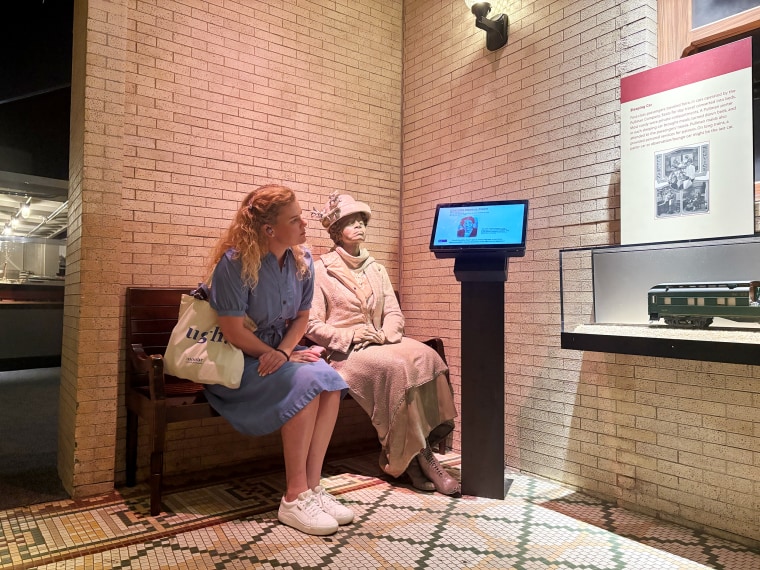
Some museum scholars dispute the Trump administration’s claims that the Smithsonian overemphasizes narratives by Black and LGBTQ artists.
“We all know that museums are historically and culturally extremely conservative, and that there’s a striking lack of exhibitions devoted to women artists, or women’s history or Black artists or LGBTQ,” said Lisa Strong, director of the art and museum studies master’s program at Georgetown University. “Museums know this and have been working, working to fix this.”
A 2022 report by journalists Julia Halperin and Charlotte Burns for Artnet found 14.9% of exhibits at 31 major U.S. museums, including the National Portrait Gallery, between 2008 and 2020 were of work by female-identifying artists, and 6.3 % were of work by Black American artists.
Related stories:
- Trump says the Smithsonian focuses too much on ‘how bad slavery was’
- Queer art facing widespread museum censorship, curators say
- White House reviewing Smithsonian exhibits to make sure they align with Trump’s vision
- Artist Amy Sherald cancels her Smithsonian show over censorship concerns
Jones said her priority on her TikTok channel is encouraging people to visit the Smithsonian museums and local museums that document history.
“Hearing those stories of people that have suffered before, problems that we face, that’s honestly why I kind of started doing this challenge,” she said. “Because when we read these stories and see things, the more we know, the better we can empathize with other people, because we have other experiences to pull from.”
She sat in the arched alcove of a railroad waiting room to listen to the story of Charlotte Hawkins Brown, who traveled to the Jim Crow South on racially segregated railroad cars during the 1920s.
“She talks about how someone said to her, ‘This is God’s country. You can’t sit there,’” Jones said.
“Hearing those stories, I do think it’s important to confront those things, because that led to where we are now,” she said. “People are affected by that. Some people will carry the scars of that.”